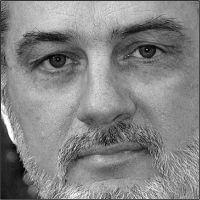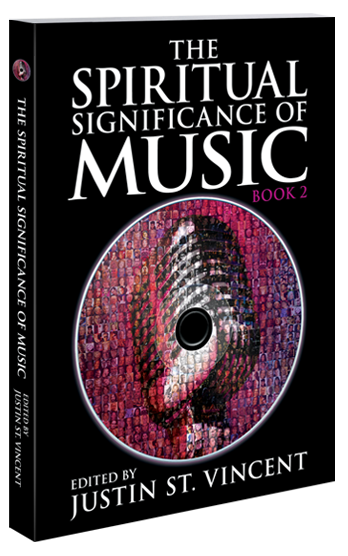Dr. J. Nathan Corbitt
// Author, Consultant & EducatorDR. J. NATHAN CORBITT is an author, consultant, educator, sociomusicologist, scholar, and Professor of Cross-Cultural Studies at Eastern University in Philadelphia, Pennsylvania. He is author of “The Sound Of The Harvest: Music’s Mission In Church And Culture” (1998), and co-author, with Vivian Nix-Early, of “Taking It To The Streets: Using The Arts To Transform Your Community” (2003) both available from Baker Books. He is also author of “The Global Awareness Pro€le” (1998, 2005) a popular online self-awareness inventory and teaching manual for global awareness assessment. Dr. J. Nathan Corbitt is also the President, CEO, and Co-Founder of BuildaBridge, an arts-education and social intervention non-profit organization.
Websites: www.buildabridge.org and www.eastern.edu
Photo: Dr. J. Nathan Corbitt / BuildABridge.org
Interview:
Music has the power to transcend the mundane. Through the musical experience, one enters into the presence of Otherness; a presence that unifies outside of the boundaries of self, race, class, and difference.
Several years ago, BuildaBridge, an arts-education and intervention organization I co-founded in 1997, was providing a summer concert series in a local homeless shelter in Philadelphia. We asked a local concert pianist to provide the music, and here I begin to show my bias. Not that he was a bad pianist. He wasn’t, but I learned that his concerts where mostly in nursing homes.
The shelter where he was performing is the largest in Philadelphia with nearly one hundred and fifty homeless children and their parents in residence. The location is depressing enough. The former mental hospital is in very poor repair with one wing closed because of broken floors and ceilings. Only the resident rats call it home. The once stately gates now provide a façade of safety in one of the toughest areas of the city, surrounded by vacant houses often home to equally menacing drug dealers and gunshots.
In this shelter is an ancient two hundred seat auditorium with a stage that supports an equally ancient grand piano. The auditorium is frequently used for community meetings and an Alcoholics Anonymous group lays claim to the schedule with religious dedication. They are a rough looking lot with persistent frowns that reveal their past and mark their territory.
As we waited, I watched with surprise as little girls with bows in their hair and neatly pressed dresses began to fill the room. Little boys in their Sunday best joined them as they consumed the front two rows. Mothers sat nervously behind them, eyeing every move. The Alcoholics Anonymous folks looked on from the back, still with their frowns. A group of “thug-looking” teens sauntered about upward grabbing their pants that hung precariously well below their waists.
The “concert pianist” arrived decked out in a full tuxedo carrying trays of potted plants. He arranged them neatly at the edge of the stage adding color to the drab canvas.
The director of the shelter became concerned about the old piano. It was still covered with a tarp. A few men rolled it across the stage, one lifting a piano leg that was very loosely connected as they scooted across the floor, it needed a crutch. Once in place, no one seemed to be able to open the lid and so the director left to find a screwdriver. He returned and removed the hinges and propped the grand piano lid open. This was disturbing to him, and so he announced that this would not do. He took another fifteen minutes to set up a PA system and a small electronic keyboard. All the while the growing crowd became noisier and the mothers more nervous that their children would take flight.
Our concert pianist was not alarmed. Once the electronic keyboard was in place, against his constant protest, he plucked at the fake electronic sounds. In his most professional voice he announced, “This fake instrument will not do. I am going to play the classics. Even an old grand is the only suitable instrument!” The director of the shelter acquiesced and moved the electric piano aside.
The “concert pianist” then laid his fingers to the grand piano and ran a scale. Clearly a dozen keys were not working or severely out of tune. He was unconcerned and breathed deeply as if the grand piano had just come from the showroom.
The audience had been enjoying this pre-concert drama and could barely control their laughter when he turned around. “What good could come out of this instrument?” I thought. “This is going to be a disaster. We made a mistake inviting a “concert pianist”, we should have brought back the Brazilian dance group that performed last week”.
“Good evening” he began. No one responded; they didn’t hear him. “GOOD EVENING!” he tried again over the noise of the audience now beginning to settle. “I AM GOING TO PLAY A PIECE BY RACHMANINOFF” he shouted.
He flipped his tails, sat comfortably on the bench that rocked back and forth, and lifted his hands in a motion to attack the keys.
Blistering. Just blistering. His fingers flew over the keys from one end to another in a tirade of sound that filled every corner of the old auditorium. It was a marvel to see his technique, but it was transcending to experience the soundscape.
I looked around the room. Children with cherub smiles on their faces had moved forward in their seats leaning over straining to see and drink in the sound. Parents were frozen in place no longer worried about their children. The frowning Alcoholics Anonymous group had closed their eyes in thoughtful reflection. And the “thug-looking” teens stood still in a salute of respect. We were one. Not white or black, not rich or poor, not novice or expert, not homeless. We were one, in the state of Otherness. It was a spiritual moment.
We were transported into Otherness: a place of peace and hope. We experienced a oneness within ourselves, each other, our artificial and accidental community, and the Creator. Children weren’t worried about abuse, moms weren’t burdened about their next house. Alcoholics Anonymous members let their guard down about their space, young thugs became boys again, and I didn’t care about the twelve broken keys played by a nursing home concert pianist. In the moment, these things were not really important.
But the story does not end here, because there was still something missing. At the cadence, we sat silent in awe, and then applause erupted. “Bravo! Bravo!” The homeless people shouted. “How did they know that word?” I thought.
The pianist came to the audience and said, “I am going to play any piece of music you want to hear. What will it be?”
“The Lion King” one boy shouted. And he played it. “Frank Sinatra” a mother shouted and he played a selection. And then one of the converted thug teenagers shouted from the back, “I want to hear something by Beethoven!” Request after request he played. For an hour he dialogued with the kids and shared about the hard work to succeed, and the years of commitment to practice.
And then, he reflected on the beauty of life and his gratitude for their kindness to him. He had brought a gift. For everyone there he offered a live plant to brighten their rooms. Within minutes, every person rushed to the front to receive the gift of living beauty.
Living beauty: that is the spirituality of music. A living beauty that is artistically created in special relationships, empowered by music that transcends the mundane, and is nurtured with compassion. We experience the Otherness of the Creator most acutely when we enter the experience from the most basic of the human condition, add the power of music, and it is spiritually significant indeed.
“Living beauty: that is the spirituality of music. A living beauty that is artistically created in special relationships, empowered by music that transcends the mundane, and is nurtured with compassion.”
– Dr. J. Nathan Corbitt, author of “The Sound Of The Harvest: Music’s Mission In Church And Culture”


